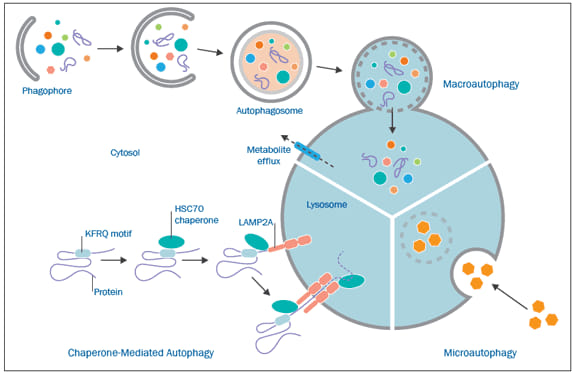What are the types of Autophagy?
Autophagy is the natural, regulated mechanism of the cell that disassembles unnecessary or dysfunctional components.It allows the orderly degradation and recycling of cellular components.Three forms of autophagy are commonly described: macroautophagy, microautophagy, and chaperone-mediated autophagy (CMA).
Macroautophagy is the main pathway, used primarily to eradicate damaged cell organelles or unused proteins.First the phagophore engulfs the material that needs to be degraded, which forms a double membrane known as an autophagosome, around the organelle marked for destruction. The autophagosome then travels through the cytoplasm of the cell to a lysosome, and the two organelles fuse. Within the lysosome, the contents of the autophagosome are degraded via acidic lysosomal hydrolase.
Microautophagy, on the other hand, involves the direct engulfment of cytoplasmic material into the lysosome.This occurs by invagination, meaning the inward folding of the lysosomal membrane, or cellular protrusion.
Chaperone-mediated autophagy, or CMA, is a very complex and specific pathway, which involves the recognition by the hsc70-containing complex. This means that a protein must contain the recognition site for this hsc70 complex which will allow it to bind to this chaperone, forming the CMA- substrate/chaperone complex. This complex then moves to the lysosomal membrane-bound protein that will recognise and bind with the CMA receptor, allowing it to enter the cell.Upon recognition, the substrate protein gets unfolded and it is translocated across the lysosome membrane with the assistance of the lysosomal hsc70 chaperone.CMA is significantly different from other types of autophagy because it translocates protein material in a one by one manner, and it is extremely selective about what material crosses the lysosomal barrier.
